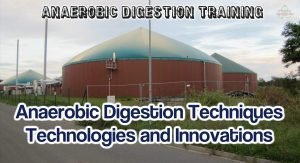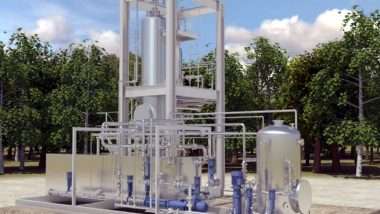In this article we introduce the scope of the many Anaerobic Digestion process techniques. Here we highlight the three very different purposes for which technologies have been developed to replicate “the stomach”. That's before we categorize the techniques used to produce the required plant outputs.
This information is important intermediate level training, for students of anaerobic digestion and biogas production, with serious intentions of becoming experts in the subject.
Watch our video on this subject, below. Or, if you prefer to read the text used in the video below, scroll on down and continue reading this page.
Anaerobic digestion is a primordial process, and includes any technique in which micro-organisms break down organic matter in the absence of oxygen. With that in mind we list the techniques which are commonly varied to achieve the treatment of organic matter, to:
- produce an optimum biogas output,
- treat the incoming organic material to render it more suitable for its beneficial use (including for use as a fertilizer), or disposal to land or watercourse
- achieve waste diversion (i.e. reduction of waste organic matter to landfill), or
- a combination of these.
Anaerobic Digestion Techniques
The techniques to achieve this vary in:
- scale and quantity (from home digesters delivering single figure kilowatts for one or two hours a day, to large farm and landfill digesters delivering up to 50 Megawatts continuously 24/7)
- the temperature of the digester (from barely above freezing, to anaerobic digestion mimicking the conditions in super-heated deep ocean vulcanic fumerols)
- the time of residence in the digester (7 to 40 days commonly)
- the water content (from fractions of a percent organic matter in effluent treatment AD plants, to solid-state treatment at, or near saturation point (for example so-called “Wet” and “Dry” anaerobic digestion processes. Processes which would be better classified as liquid (or slurry) processes in which the substrate is pumped (i.e. “wet”), versus solid state handling (i.e. “dry) anaerobic digestion.
- the pH, catalysts, enzymes, and additives used during the process to manipulate the choice of the prevalent micro-organisms present
- batch (manually controlled and automatic sequenced) or continuous-flow digesters
- single stage two-stage and multi-stage digesters
- mixing, and flow through the process (Continuous Stirred Tank Reactors (CSTRs) to Plug Flow Digesters).
Any of the above techniques employed may be optimized using any of a number of technologies for:
- biogas volume production per unit of incoming carbon content, or
- the best treatment to pass imposed discharge consent quality, or
- both.
Is it therefore surprising that biogas plant designs vary so much? Every AD plant designer/ construction organisation who offers their own unique process, can easily justify such a claim.
Any expert in anaerobic digestion needs to be aware of all the above core variants on the anaerobic digestion process, and core AD process innovations recently developed and continuously arising from the basics research being done globally.
 By studying the lessons which follow in this course Module (Part 1) the student will first learn which of these techniques are commercially important technologies, which are currently winning construction contracts, in the next video. And, go on in this Chapter to lectures explaining some of the most important commercially available anaerobic digestion processes in the developed nations.
By studying the lessons which follow in this course Module (Part 1) the student will first learn which of these techniques are commercially important technologies, which are currently winning construction contracts, in the next video. And, go on in this Chapter to lectures explaining some of the most important commercially available anaerobic digestion processes in the developed nations.
In subsequent modules of this course lectures include recent innovations, which are rapidly improving the practice of AD and biogas production. We also describe the “add-on processes” developed for specific purposes.
To enrol for this free training course go to https://ADTraining.Club





Innovation may come, but will the digester ever beat solar?
Thanks to my father who informed me about this site. What’s the difference between techniques and technology?
I like these expert insights. Keep on writing, great job!